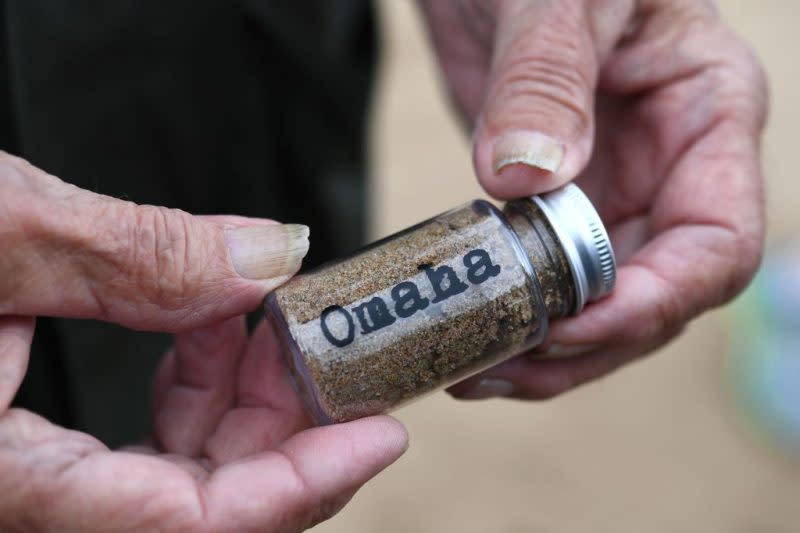D-Day permanently changed Omaha Beach’s sand in ‘astonishing’ way, researchers found

(NEXSTAR) – Looking around Omaha Beach, today’s visitors to the site of the D-Day operations are faced with stark reminders of the harrowing battles that began on June 6, 1944: the bomb craters left behind at Pointe du Hoc; the concrete bunkers where the German military fired on the Allied troops; and the Normandy American Cemetery, where thousands of U.S. soldiers who died during Operation Overlord are buried.
But there’s another major indicator of the hard-fought battle that ensued on Omaha Beach, found in the sand itself.
Newspapers and the D-Day Invasion: A pivotal role in WWII reporting
As a result of the intense fighting, it has been estimated that up to 4% of the “sand” on Omaha Beach is actually comprised of shrapnel that has broken down into tiny pieces in the decades following World War II.
Geologists from the University of Texas and the University of Utah made the discovery in 1988, after taking home samples of the sand to study under their microscopes and finding a significant portion exhibiting magnetic properties.
“It is of course not surprising that shrapnel was added to the Omaha Beach sand at the time of the battle, but it is surprising that it survived 40-plus years and is doubtless still there today,” geologists Earle F. McBride and M. Dane Picard, then of UT Austin and U of U, respectively, said of their findings in a 2012 article in EARTH magazine.

The researchers, in a 2011 paper published by the Sedimentary Record, also admitted that they could not be certain if their sample was representative of the beach as a whole; they also said they collected sand from Utah Beach, one of four other landing sites in Normandy on D-Day, but found no shrapnel at all in that sample. (They acknowledged that Utah was a “much less fiercely fought landing location,” however.)
Aside from the shrapnel, McBride and Picard said they were shocked at the presence of spherical, mostly smooth beads of iron and glass in the sand, which did not appear naturally formed.
The two ultimately concluded that the heat of the exploding munitions at Omaha Beach had produced the beads — the iron by explosive eruptions that created molten metal, and the glass by intensely hot explosions that melted quartz crystals in the sand (which had mixed with sodium and calcium from seawater) and then threw them into the air, causing them to rain down in tiny spherical droplets.
“We were astonished,” the researchers wrote in their 2011 paper.
How one of D-Day’s youngest heroes became a paratrooper at 17
Today, however, it’s very likely that the sand on Omaha beach contains a lower percentage of shrapnel than it did in 1988. The iron pieces, they said, could survive among abrasive grains of sand for “hundreds of thousands of years,” but will corrode much sooner when subjected to saltwater. Perhaps not surprising, some of the shrapnel McBride and Picard were already covered in rust.
In 2011, McBride estimated that most of the pieces will rust away within another 100 years.
“The net result is these things will get smaller and smaller and then finally get carried away by storms or hurricanes and be taken out of the beach,” he said, per a 2012 article published by the University of Texas at Austin. “So their time is numbered.”
For the latest news, weather, sports, and streaming video, head to WAVY.com.

